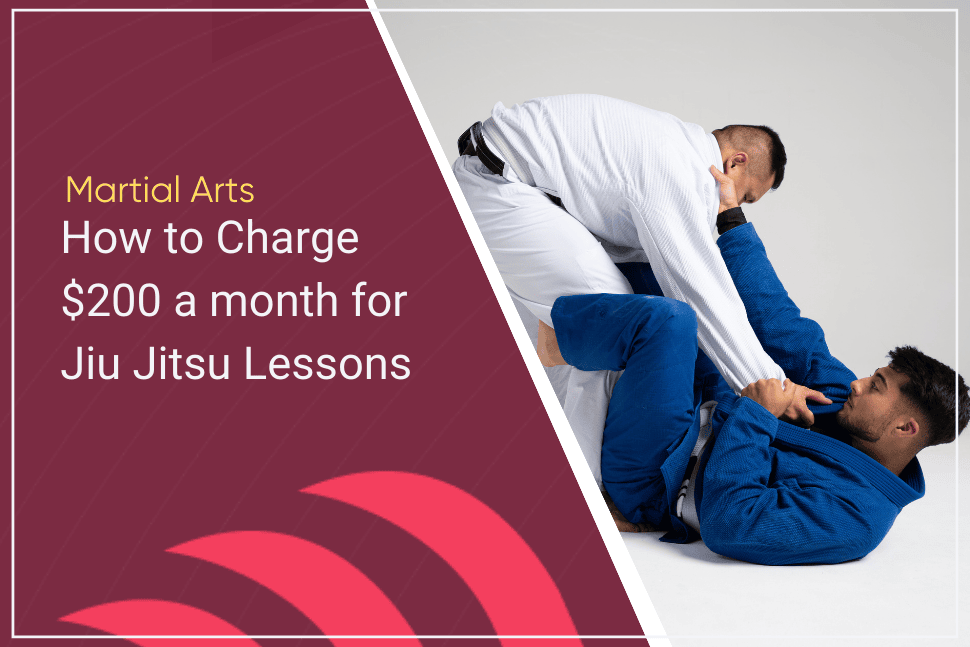Training with the same gym partners offers a range of benefits that can enhance motivation, accountability, and performance. Consistent workout partners lead to a supportive environment, encouraging individuals to push their limits and achieve their fitness goals. This camaraderie often results in increased enjoyment, making workouts feel less like a chore.
Having regular gym partners also fosters a sense of commitment. When individuals know their partners are counting on them, they are less likely to skip sessions. This accountability can lead to a more disciplined approach to fitness, contributing to better results over time.
Moreover, training with familiar faces can boost confidence. Partners often provide constructive feedback and encouragement, which can help individuals improve their techniques and overcome challenges. This collaboration not only enhances physical performance but also builds lasting friendships within the fitness community.
Enhanced Motivation and Accountability
Training with the same gym partners can significantly boost motivation and accountability. The shared experience fosters a supportive environment that encourages individuals to stick to their fitness commitments.
Consistent Attendance Through Peer Encouragement
When gym partners regularly attend sessions together, they create a sense of obligation. This commitment helps members show up consistently, as they do not want to let their peers down.
- Scheduled Workouts: Having set times for sessions can lead to better attendance.
- Support System: Friends provide reminders and encouragement, enhancing likelihood of showing up.
This accountability makes it easier to ignore excuses and prioritize fitness goals.
Increased Effort During Workouts
Training alongside others can lead to increased effort. Partners can push each other to perform better and go beyond their limits.
- Real-time Feedback: They can offer immediate suggestions for improvement, ensuring proper technique.
- Encouragement: Verbal motivation during tough sets can drive individuals to lift heavier or complete more reps.
This dynamic can transform a routine session into an opportunity for growth and personal bests.
Building Healthy Competitive Spirit
Working out with the same partners fosters a friendly competitive atmosphere. This can motivate individuals to push their limits and strive for better results.
- Setting Challenges: Whether aiming for personal records or friendly contests, competition can make workouts more engaging.
- Celebrating Success: Acknowledging each other’s achievements further strengthens the bond and fosters motivation.
This spirit encourages everyone to focus on improvements while maintaining a positive environment.
Improved Performance and Progress
Training with the same gym partners leads to enhanced performance and measurable progress. By maintaining consistency and collaboration, individuals can achieve better results.
Tracking Progress Collectively
Working out with the same partners promotes accountability. Individuals can consistently track each other’s performance, providing motivation to improve over time. Shared records of personal bests can help identify areas where each person excels or struggles.
This collective tracking can also highlight trends in progress, such as increased weights lifted or improved endurance. With regular feedback, partners can adjust their training regimens to target weaknesses and optimize performance.
Spotting and Safety Benefits
Training together enhances safety during workouts, especially with heavy lifts. Having a trusted partner ensures proper spotting, reducing the risk of injury. This aspect is crucial during exercises like bench presses and squats, where missteps can lead to serious accidents.
Moreover, partners can encourage each other to maintain proper form. This real-time correction helps prevent injuries and promotes effective training. Safety is not just about avoiding accidents; it’s also about ensuring that each workout maximizes results.
Pushing Limits With Trusted Partners
Trusted gym partners are essential for pushing personal limits. They can encourage each other to attempt heavier weights or tackle more challenging workouts. This mutual support fosters a competitive spirit, which can drive individuals beyond their perceived limits.
Moreover, training with partners who share similar goals creates a focused training environment. Each individual is more likely to stay committed and engaged during workouts, leading to significant improvements over time. Together, partners can conquer challenges that might seem insurmountable when training alone.
Deeper Social Connections and Support
Training with the same gym partners fosters meaningful relationships that can enhance both physical fitness and emotional health. These connections are built through shared experiences and mutual encouragement, creating a supportive environment.
Strengthening Bonds Through Shared Goals
Training alongside the same gym partners strengthens relationships through the pursuit of common fitness objectives. When individuals set and strive for goals together, they create a sense of accountability. This accountability encourages consistency in attendance and effort.
Working together on challenging exercises often leads to shared successes, which enhances camaraderie. Celebrating milestones—such as achieving a personal record or completing a challenging workout—can deepen trust and foster lasting friendships. Furthermore, gym partners can provide immediate feedback and constructive criticism, facilitating skill improvement and enhancing overall performance.
Boosting Emotional Well-Being
The social support gained from regular interactions with gym partners can significantly uplift emotional well-being. Engaging in physical activities together allows individuals to share their struggles and triumphs, reducing feelings of isolation. The presence of familiar faces can make workouts more enjoyable and less intimidating.
Moreover, gym partners often provide motivation during tough workouts. They can encourage each other to push through limitations, leading to an enhanced sense of resilience. The emotional bonds formed through shared experiences can also cultivate a sense of belonging, making it easier to navigate life’s challenges outside the gym.
Developing Consistent Workout Routines
Establishing consistent workout routines becomes simpler when training with the same gym partners. Shared goals and accountability create a framework that encourages adherence to a regular schedule. This consistency leads to improved fitness outcomes and greater enjoyment of the training process.
Establishing Structure and Discipline
Training with trusted partners fosters a structured environment. Participants often agree on specific days and times to meet, creating a reliable routine. This scheduled approach allows each person to allocate time for workouts, making fitness a priority.
Key elements of structure include:
- Pre-set workout times: Commitment to meeting on designated days ensures fewer skipped sessions.
- Defined goals: Partners can discuss objectives, allowing them to plan workouts around these aspirations.
This focus on discipline encourages individuals to prepare mentally and physically for their sessions, enhancing performance and motivation.
Reducing Missed Sessions
Having workout partners significantly reduces the likelihood of missed sessions. The social aspect of training creates mutual accountability. When one person feels demotivated, encouragement from partners can rekindle their drive to attend.
Strategies to minimize absences:
- Regular check-ins: Partners can communicate through text or apps to confirm attendance and share progress.
- Flexibility in schedules: If one partner cannot make it, they can often reschedule group sessions without disrupting the routine.
By prioritizing attendance together, individuals cultivate a habit of regular training, which leads to sustained progress in their fitness journeys.
Enhanced Learning and Technique
Training with consistent gym partners fosters an environment conducive to improved learning and technical skills. This relationship enables athletes to receive constructive feedback and share knowledge effectively.
Receiving Constructive Feedback
Consistent training with the same partners allows for ongoing, real-time feedback. As they observe each other’s form and technique, they can provide insights that lead to immediate improvements.
Feedback is crucial for mastering techniques, especially in complex movements. Constructive criticism can help athletes identify areas of weakness, promote accountability, and encourage a focus on proper form.
By practicing together regularly, partners can reinforce correct techniques, leading to long-term retention and skill mastery. This dynamic creates a supportive learning atmosphere where individuals can thrive.
Sharing Knowledge and Best Practices
Experienced gym partners can impart their knowledge and best practices to one another. This exchange often covers various training techniques, nutritional advice, and recovery strategies.
Each partner brings unique experiences, which enriches the collective training experience. For example, one partner may have had success with a specific lifting technique or recovery routine, while another might offer insights on effective stretching.
By openly discussing their strategies and results, gym partners establish a culture of continuous improvement. This collaboration enhances not only individual capabilities but also strengthens group cohesion, promoting better training outcomes.
Increased Enjoyment and Fun
Training with the same gym partners can significantly enhance the exercise experience. Familiarity among workout partners often leads to a more relaxed atmosphere.
Social Interaction: Engaging with friends during workouts fosters a positive environment. Laughter and conversation can make the time spent in the gym enjoyable. This connection often reduces the feeling of being overwhelmed.
Motivation Boost: Partners encourage each other to push through challenging workouts. A friendly competition can make sessions more exciting. This camaraderie often leads to better overall performance.
Variety in Workouts: Regular partners can introduce new exercises. They can share routines that keep workouts fresh and interesting. This variety can help prevent boredom, maintaining high levels of enjoyment.
Shared Goals: Working towards common fitness goals creates a sense of unity. Celebrating achievements together strengthens bonds and increases satisfaction. The journey becomes more fulfilling with supportive partners.
Ultimately, the fun derived from training with the same gym partners enhances consistency. This enjoyment can lead to better adherence to fitness routines and a more sustainable workout habit.
Long-Term Commitment to Fitness
Training with the same gym partners promotes a long-term commitment to fitness. When individuals regularly work out together, they create strong bonds that encourage accountability.
Benefits of Accountability:
- Motivation: Partners motivate each other to stay consistent.
- Support: They provide emotional and physical support during tough workouts.
- Challenge: Training together introduces friendly competition, pushing each other to achieve more.
Having consistent workout partners can make fitness routines feel less like a chore. It transforms exercise into a social activity.
Routine consistency leads to better adherence to fitness goals. Regular attendance at the gym becomes a shared commitment, fostering discipline.
Studies show that those with workout partners tend to stick with their programs longer. This sustained effort results in more significant progress over time.
Another factor is the establishment of shared goals. When gym partners set and pursue their objectives together, their success feels interconnected.
Fitness becomes a part of their lifestyle rather than a short-term endeavor.
In summary, having dedicated gym partners not only enhances individual motivation but also creates a supportive environment for sustained fitness journeys.
Reduced Gym Anxiety for Beginners
Training with the same gym partners can significantly reduce anxiety for beginners. Newcomers often feel intimidated in a gym environment due to unfamiliar equipment and workout routines. Regular workout partners can provide support and encouragement.
Benefits:
- Familiarity: Having consistent partners helps create a comfortable atmosphere. This familiarity can ease feelings of self-consciousness.
- Support: They offer encouragement and positive reinforcement during workouts. This support can enhance confidence.
- Shared Learning: Beginners can learn from each other, discussing techniques and experiences. This exchange of knowledge helps in navigating challenges.
Social Interaction:
- Building relationships at the gym fosters a sense of belonging. This social aspect makes attending the gym feel less daunting.
- Group workouts provide a distraction from insecurities. Engaging in conversation can shift focus away from anxiety.
Motivation:
- Shared fitness goals with partners can drive motivation. Seeing others succeed enhances commitment to personal fitness journeys.
All these elements combined contribute to a more enjoyable gym experience, making it easier for beginners to persist in their fitness routines. We hope you learned more about the benefits of training with the same gym partners.
 Gym Owner Statistics: The State of Gyms, Member Trends, and Usage Data
Gym Owner Statistics: The State of Gyms, Member Trends, and Usage Data




 EN (English)
EN (English)
 JA (日本語)
JA (日本語)